Although in the last few years the city changed a lot, got more expensive and suffers from a lack of apartments and studios, Berlin still seems like a perfect place for artists to live and work. Vibrant, full of galleries, project spaces and independent initiatives, Berlin has been chosen by many established as well as emerging artists from all over the world. It is not surprising that also a lot of artists of Polish origin decide to move in here. On the one hand, the city offers them an international art scene, many institutions and international contacts. On the other, they still keep in touch with Polish art scene, be active there and do not lose contact with it. Within last few years Polish artists built up a strong position in Berlin, and each year they gain more and more interest on a local as well as international scene. So who is a young Polish Berliner among the artists and whom for sure it is good to know and follow?

Agnieszka Polska
Agnieszka Polska (born 1985 in Lublin)
She is well known for her works and installations, which are based on film, animation and photography. The artist reaches for subjects related to historical events or story of the avant-garde movements and uses resources of photographic materials, archives, texts or words of all kinds. In her works, Agnieszka Polska asks questions about society and forms of creating a historical narration. Her works were already presented in numerous institutions all over the world, among the others in New Museum and MoMA in New York, National Art Gallery in Prague, Salzburger Kunstverein in Salzburg or Shirn Kunsthalle in Frankfurt.
This year for sure belongs to her. This young artist, trained in Lublin and Cracow was nominated for a prestigious National Gallery Prize for Young Art (Preis der Nationalgalerie für Junge Kunst) along with three female artists under 40. Since 2000 the prize has been given every second year and nominees are always artists, who live and work in Germany, but do not necessarily have to be German. In previous editions, awards went to: in 2015 to Anne Imhof (who represents Germany at this year’s Venice Biennale), in 2013 to Mariana Castillo Deball or in 2011 to Cyprien Gaillard.
Agnieszka Polska is the first Polish artist selected and nominated for this prize. “Often conceiving absurd and humorous stories that capture an intimate message on contemporary reality, her engagement with her subject matter is infused with an awareness that history is a matter of discourse, not of facts, and is only ever accessible through the present. On this basis, however, the themes Polska addresses and the image material she draws from are as complex as they are diverse. The jury chose Agnieszka Polska for both the versatility and conciseness of her filmic language” we could read in the substantiation of her nomination.
From September this year, all the four nominees present their works in a special show in Hamburger Bahnhof in Berlin. The announcement of the winning artist, who will be awarded a solo exhibition accompanied by a catalogue, will take place on 20 October 2017. Fingers crossed!

Agnieszka Polska, Watery Rhymes, HD-animation, 4 min. 10 sec., 2014 (still), courtesy of the artist.
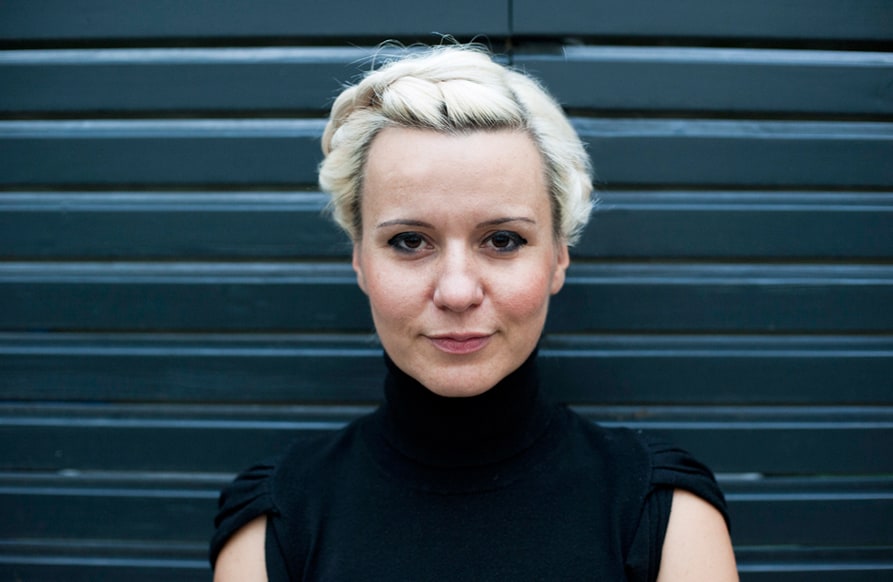
Anna Kott, courtesy of the artist
Anna Kott (born 1975 in Ruda Śląska)
She graduated from Kraków Academy of Fine Art in 2001. Straight after graduation, she moved to Berlin and started her artistic career. She became recognised for her dark and very intense big scale canvas. In these works, she combined symbols and styles from traditional painting, which she interpreted in a new way and used to create her artistic world of womanhood, sexuality, contradiction and transgression. Afterwards, she shifted to a new chapter in her career, in which she included photography into her artistic practice. She turned into the subject of architecture and reduced geometrical forms and human perception of the third dimension and its transformation into painting and drawing. The results of this new fascination were presented at the exhibition “Pages of the Book” in Architecture Museum in Wroclaw in 2015 and during a temporary light installation “Hybriden” made for Jerke Museum in Recklinghausen in autumn 2016.
During the last two years, the artist concentrated on a new project called “Parallel”, which was prepared for an Art-in-Residency Programme by Hauser & Wirth in Somerset in England. The artist started the project in winter of 2016 and developed it further during her second stay there, in the summer this year. During her first stay in Somerset, the artist concentrated on two contradictory perspectives of world perception: the bird’s eye-view and the worm’s eye view. Her final work combines both viewpoints into one parallel projection in the form of a painting. During the second residency, Anna Kott added another aspect, which she developed in-between time in Berlin: a motif of a rabbit, an inspiration from the English novel “Alice in Wonderland” and from the legendary story about rabbits, which inhabited a no man’s land between East and West Berlin. The project will likely continue in the Bruton Museum next year and will include an exhibition. The project will be continued and finished in Berlin, so hopefully, soon it will be possible to see the final results. Apart from that, the artist starts another artistic project “Milky Bar”, which she will realise in autumn as a part of residency CCA Andratx in Andratx on Spanish island Mallorca.

Anna Kott, Soulmates, 2017, acrylic/ oil on canvas, 90 x 90 cm, courtesy of the artist.
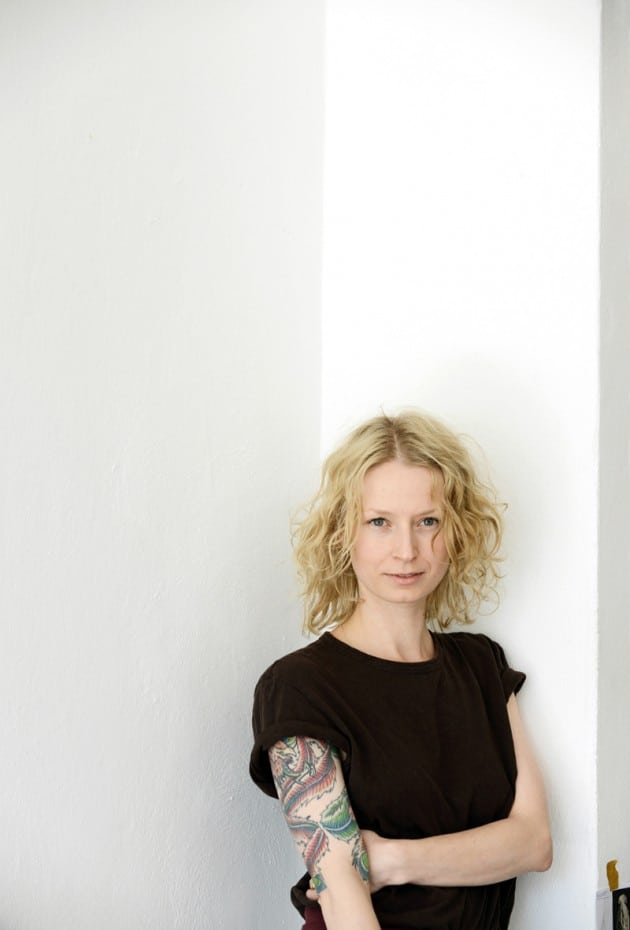
Natasza Niedziolka, courtesy of the artist
Natasza Niedziolka (born 1978 in Międzychód)
Natasza Niedziolka studied at the Düsseldorf Art Academy in a class supervised by an Israeli painter Tal R. Almost immediately she developed her own unique way of dealing with a matter of painting canvas. The artist uses embroidery thread on stretched canvas as her primary material. She transforms a physical form of fabric by subtracting and adding threads in a very methodical and almost meditative process. As a result, her final artworks oscillate somewhere between drawing, painting and tapestry. While earlier series of Niedziolka’s works employed “multi-coloured, simplified still life imagery as an archetype, a mostly monochromatic hatching effect is the focus of her latest artworks that are grouped under the name “Zero” ”. Especially the recent series of works, in which the artists eliminates any kind of imagery, reveals principle of her artistic attitude. It includes the repetitive nature of stitching, an aim to perfection but with an element of unpredictable imperfection. Therefore, the perception of the works by Natasza Niedziolka happens always on many different levels. There is the distanced viewpoint, with the strong visual effect of monochromatic fields. Upon closer examination, the handcrafted character of her works amazes the viewer. Although based on a simple repeated gesture of needle and thread, the result is a richly elaborate construction. From May to June 2017 the works from “Zero” series have been shown in Natasza Niedziolka’s solo exhibition at the Horton Gallery in New York. Right now the artist is back to her studio and works on a new project. What will it be? It remains a secret…

Natasza Niedziolka, zero 1567, 95x105cm , embroidery on linen,
courtesy of the artist
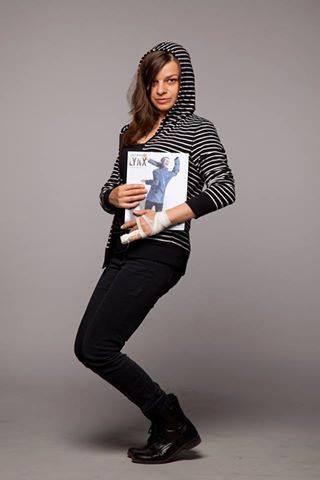
Zorka Wollny
Zorka Wollny (born 1980 in Kraków)
Her works are very difficult to categorise because they integrate and use elements from theatre, music composition, dance, choreography and performance, random participation and visual arts. For her pieces, which are mostly described as “concerts”, the artist invites and collaborates both with professional musicians, actors, dancers and conductors as well as local communities and their volunteers. A local, historical and social context is crucial to each work by Zorka Wollny and becomes a starting point for each of her new pieces. Trained at the Acadamy of Fine Arts in Kraków the artist says: “Forms – such as a musical piece, a play, an exhibition, are for me an equal part of reality. They start a dialogue with it; they exist only in a context, they come into existence in time only once, they cannot possibly be repeated. They are neither imitation nor transgression nor critical theory. The form and the content must go hand by hand, coexist and harmonise, so that they can create/provoke a complete, immersive event. An event in which not only the senses but also intellectual sensibility of the audience is involved, making it possible for the members of the audience to experience it as a reality existing in the given space and time. My main postulate, concerning both theatre and visual arts, is not to separate sensuality from intellect. A reflection is a sensual act. This is the principle I try to follow composing site-specific music, making spectacle-collages or musical pieces with elements of choreography.”
In 2016 and 2017, the artist was working on a piece called “Impossible Opera”, which was made in Oldenburg as a part of an artistic grant given by the Stiftung Niedersachsen. Another version of this work – “Vox Populi”, prepared together with Andrzej Wasilewski, will be presented in November 2018 at TRAFO gallery in Szczecin. The artist spends this summer in New York, where she takes part in the iscp – International Studio & Curatorial Program, during which she finishes her recent projects and prepares a new one, inter alia for the Audio Art Festival in Kraków and Heroine of Sounds Festival in Berlin. From October this year, Zorka Wollny will lead her master class at the Academy of Art in Szczecin, where she has been teaching from 2010.

Zorka Wollny, Ophelias. Iconography of Madness, 2013, fot Adam T.Burton
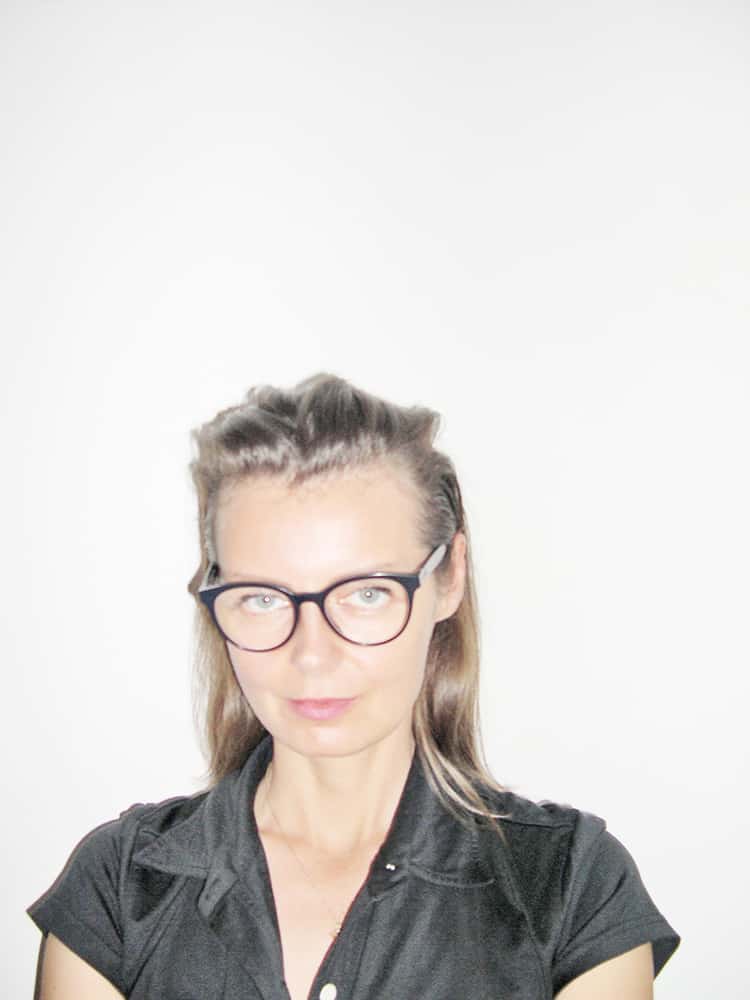
Marlena Kudlicka
Marlena Kudlicka (born 1973 in Tomaszów Lubelski)
Marlena Kudlicka, the graduate of the University of Fine Arts in Poznań, is finishing preparation for her second solo show at the ZAK BRANICKA gallery in Berlin, which opens during Berlin Art Week in September this year. In her installation, the artist deals with a relationship between space, which she described as “container of counterpoints”, and language. She uses as points of departure texts, technical and mathematical symbols and singular characters, which are used to create protocols, classifications, methodical systems, strategic concepts as well as specifications for standards and norms. The artist also admits that concrete poetry becomes a significant inspiration for her practice the traces of which can be found in her work. She treats letters, characters or numbers more like sculptures, diagrams and algorithms. They become a beginning for further transformation into geometrical forms, which then are set up into space. This scale and dimensions between those two elements: closed, defined and planned form and open and undefined space is something, which interests the artist the most.
Installations by Marlena Kudlicka are made out of steel parts: long thin bars, tubes or plates, as fine as a sheet of paper. Using them the artists builds a strong contradiction between the material and visual world. Tough metal is presented as very fragile and delicate. Each of the installations seems to balance on a construction counterpoint and looks gentle and temporal but from a material point of view, very resistant and solid. For a few years now the artist has been incorporating transparent glass into her installations: pipes or huge smooth slabs. This way, she added another, even more flexible but at the same time even more impermanent, element, which creates a strong but almost invisible tension within a space.
For her upcoming exhibition in Berlin, the artist prepares a series of sculptures and sculptural collages, which will relate to the avant-garde tradition of constructivism and the subsequent practice of Polish avant-garde artists. The title of the show “Elements of Peaceful Engagement” refers to “a strategic system that merges with office standards, which in turn, tailors a decision making process”. The space of the gallery will be redefined by the artist into a workstation modules and will provide flexibility to work both individually and collectively.
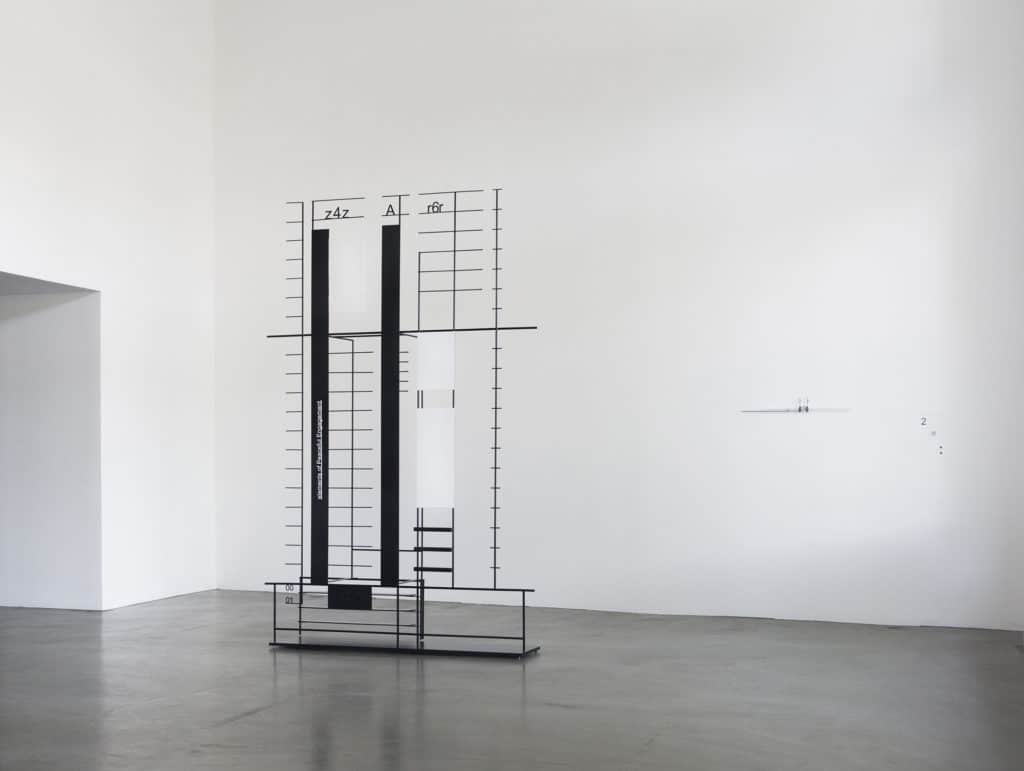
Marlena Kudlicka, sugar in the ashes, Official Capacity, 2017 sculpture, 230 x 150 x 52cm, powdercoated steel, © Marlena Kudlicka, Courtesy: Zak Branicka, photo: Amandine Quillon
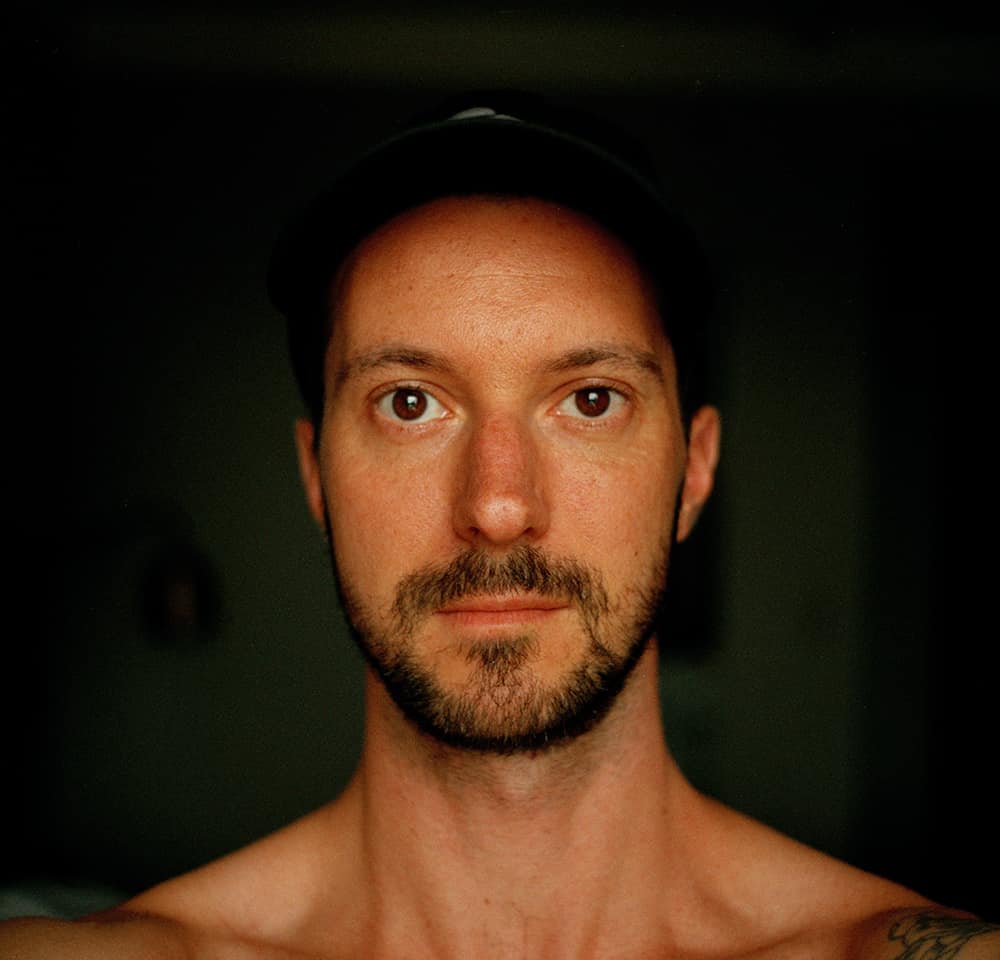
Oiko Petersen, Self-portrait
Oiko Petersen (born 1983 in Wrocław)
Oiko Petersen became recognisable for his photographic projects “Guys. From Poland with Love”, “Downtown” or “123 men in a blue t-shirt”, in which he systematically analysed and presented socially excluded groups: gays and people with Down syndrome. This projects had a distant, almost academic or conceptual character. Then the artist came up with an entirely new project. He shifted from a neutral and distanced perspective of the photographer, who merely documents, and changed into the main protagonist, who tells his own stories of very personal, intimate and emotional character. His projects became a self-reflection, a form of therapy and a way of dealing with own personal experiences. With the help of photographic images, the artist creates a narration about pure life, as it is, without any filter and self-creation. This life, which first is full of joy, dream and expectations changes unexpectedly into disappointment, depression, distress and pain. Reaching to this lower point of lost hope the artist started to move forward towards a new place, which also leads to a new beginning. His last project “Now I accept hope” from 2016 presents this transgression from night to daylight, in which he finds joy in simple everyday gestures and activities again. Oiko Petersen deals with the past and steps into a new chapter, not only personally but also artistically. At the moment he is working in parallel on two new photographic projects, in which he will combine both self-reflected experiences with an analytical and research-based approach. The first one tells a story of personal transformation and searching for one’s own identity against the background of the geopolitical change of last two decades of 20th century. Meanwhile, the artist started to develop another photographic narration connected to a nudist beach located by Teufelssee – one of the most legendary cruising areas in Berlin gay society.

Oiko Petersen, Till with friends (Teufelssee – Berlin, 2017), courtesy of the artist
Edited by Contemporary Lynx








